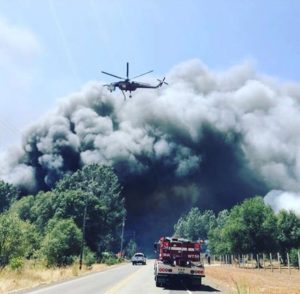blog, Disaster Preparedness, Earthquakes, Fire, Floods, Hurricane
STAGES OF DISASTER MANAGEMENT CYCLE
Following up on the last post regarding the Disaster Management Cycle and causes of….
In today’s blog article we will take an in-depth look at the stages of the cycle.
Emergency managers think of disasters as recurring events with five phases: Prevention, Mitigation, Preparedness, Response, Recovery.
The significance of the management cycle is that all communities are in at least one phase of emergency management at any time.

Prevention
The best way to address a disaster is by being farsighted. This means identifying potential hazards and devising safeguards to mitigate their impact. Although this stage in the cycle involves putting permanent measures into place that can help minimize disaster risk, it’s important to acknowledge that disasters can’t always be prevented. the risk of loss of life and injury can be limited with good evacuation plans, environmental planning, and design standards.
Mitigation
Mitigation is the effort to reduce loss of life and property by lessening the impact of disasters. It refers to measures or actions that can prevent an emergency, reduce the chance of an emergency, or reduce the damaging effects of unavoidable emergencies. Examples are building codes and zoning; vulnerability analyses; public education.
Preparedness
Preparedness is an ongoing process in which individuals, communities, businesses, and organizations can plan and train for what they’ll do in the event of a disaster. Preparedness is defined by ongoing training, evaluating and corrective action, ensuring the highest level of readiness. Training and exercising plans are the cornerstone of preparedness, which focuses on readiness to respond to all hazards, incidents, and emergencies. Training and emergency preparedness plans increase a community’s ability to respond when a disaster occurs. Examples of preparedness plans are emergency exercises/training, warning systems.
Response
The response phase occurs in the immediate aftermath of a disaster. The Efforts to minimize the hazards created by a disaster. Ideally, a disaster-management organisation will coordinate the use of resources (including personnel, supplies and equipment) to help restore personal and environmental safety, as well as to minimize the risk of any additional property damage. Response actions includes activating the emergency operations center, evacuating threatened populations, opening shelters, and providing mass care, emergency rescue and medical care.
Recovery
This stage is about helping individuals, communities, businesses, and organizations return to normal or a new normal depending on the impact of the disaster. the affected population has access to food and water and some form of transitional shelter. This stage is sometimes divided into two: early recovery and medium-term recovery.
The goals of the disaster management cycle
- The first primary goal of the disaster management cycle is to reduce or stop the immediate loss from the disaster itself.
- Help those who need assistance.
- The final goal is to encourage recovery from both property and individuals involved.
We welcome any comments or suggestions relative to the above article.
Written by Kehinde, NEPTA Writer
